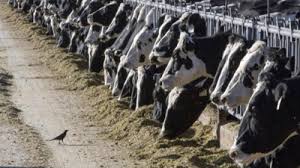In a recent announcement by the United States Department of Agriculture (USDA), alarming findings have emerged regarding the detection of bird flu in tissue samples of a dairy cow destined for slaughter. Let’s delve into the details of this concerning development.
The USDA Alert
Unexpected Discovery
The USDA revealed that tissue samples collected from a dairy cow slated for slaughter tested positive for bird flu. This revelation has raised significant concerns within the agricultural and public health sectors.
Implications for Food Safety
The detection of bird flu in a dairy cow intended for human consumption underscores potential risks to food safety. The USDA’s prompt action and transparency are critical in addressing these concerns and ensuring consumer confidence.
Understanding Bird Flu
Avian Influenza Basics
Bird flu, also known as avian influenza, is a contagious viral infection that primarily affects birds. However, certain strains, such as H5N1 and H7N9, have the potential to infect humans and other mammals.
Transmission and Spread
Bird flu can spread through direct contact with infected birds or their droppings, as well as through contaminated surfaces or materials. In rare cases, human-to-human transmission may occur, posing significant public health risks.
Response and Mitigation Efforts
USDA’s Vigilance
The USDA has implemented rigorous surveillance and monitoring measures to detect and contain instances of bird flu in livestock. Timely detection and response are crucial in preventing further spread and minimizing potential health impacts.
Public Awareness and Education
Educating farmers, veterinarians, and the general public about the signs, symptoms, and preventive measures for bird flu is essential. Increased awareness can empower individuals to take proactive steps to safeguard animal and human health.
The USDA’s alert regarding the detection of bird flu in a US dairy cow serves as a sobering reminder of the ongoing threats posed by infectious diseases. Vigilance, collaboration, and proactive measures are imperative in mitigating risks and ensuring food safety.




